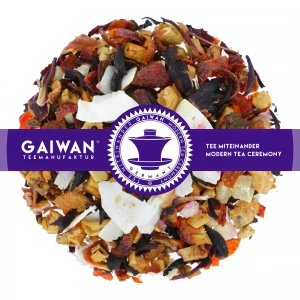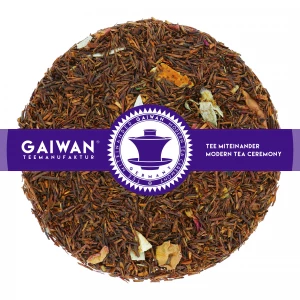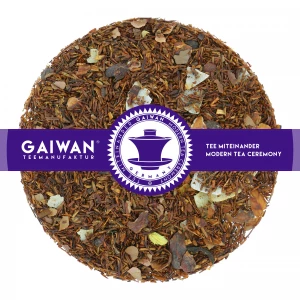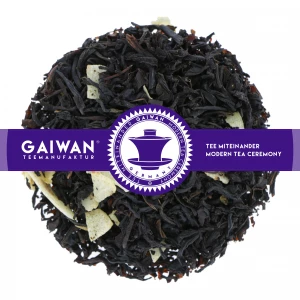Loose Tea with Coconut
When it's stormy and rainy outside, one wishes to go to the sea. The mere idea of lying in the Caribbean sun, in the shade of large palm trees on a comfortable beach lounger, while sipping the juice of a fresh coconut, already puts you in a better mood. Our delicious teas with coconut may not teleport you to a holiday. But they will still lift your mood and bring a certain tropical feeling to your home. Why not try our Tropical Dream tea?
-

Out of stock
Taste: fruity, wild, aromatic
Preparation: 4-5 teaspoons (10-15g) per 1 L (13.8 fl oz) of water (100°C | 212°F), brewing time: 4-5 minutes.
Ingredients: apple pieces, rose hips, hibiscus, coconut flakes, candied pineapple, flavors. Learn More -

Out of stock
Taste: fruity, full, aromatic
Preparation: 3-4 teaspoons (10-12g) per 1 L (13.8 fl oz) of water (100°C | 212°F), brewing time: 3-5 minutes.
Ingredients: rooibos¹, flavors, orange peel, apple pieces, coconut flakes, rose flowers. Ingredients¹ from controlled organic cultivation. Learn More -

Out of stock
Taste: soft, full, chocolatey
Preparation: 3-4 teaspoons (10-12g) per 1 L (13.8 fl oz) of water (100°C | 212°F), brewing time: 3-5 minutes.
Ingredients: rooibos, cocoa shell, coconut chips, flavors. Learn More -

Out of stock
Taste: mild, tender, fine
Preparation: 4-5 teaspoons (10-15g) per 1 L (13.8 fl oz) of water (100°C | 212°F), brewing time: 3-4 minutes.
Ingredients: black tea from ceylon and china, coconut flakes, flavors. Learn More
Facts About Coconut
Coconuts are not actually nuts at all. They are in fact kernels of a large coconut fruit that can weigh up to 2.5 kilograms. Coconut trees are also quite unusual. Their trunks are only about 30 cm thick in diameter, but the trees can grow up to 30 metres high. They are optimally adapted to tropical conditions. It tends to storm there quite often, which is why the trunks are extremely flexible without breaking.
Almost everything from the coconut is used. The outer shell is often made into shells or works of art, and the fibres on it are spun into mats, nets and ropes. The flesh can either be eaten raw or made into copra - the stuff that is then used to make all the familiar coconut products such as coconut flour, coconut milk, coconut flakes, etc. - and the coconut water from inside the fresh kernel can be drunk. If you want to learn more about the coconut and its cultivation, we recommend this article from AgHires.




